Submitted by WA Contents
New set of photography reveals captivating details of Jean Nouvel's Philharmonie de Paris
France Architecture News - Mar 07, 2018 - 03:08 24282 views
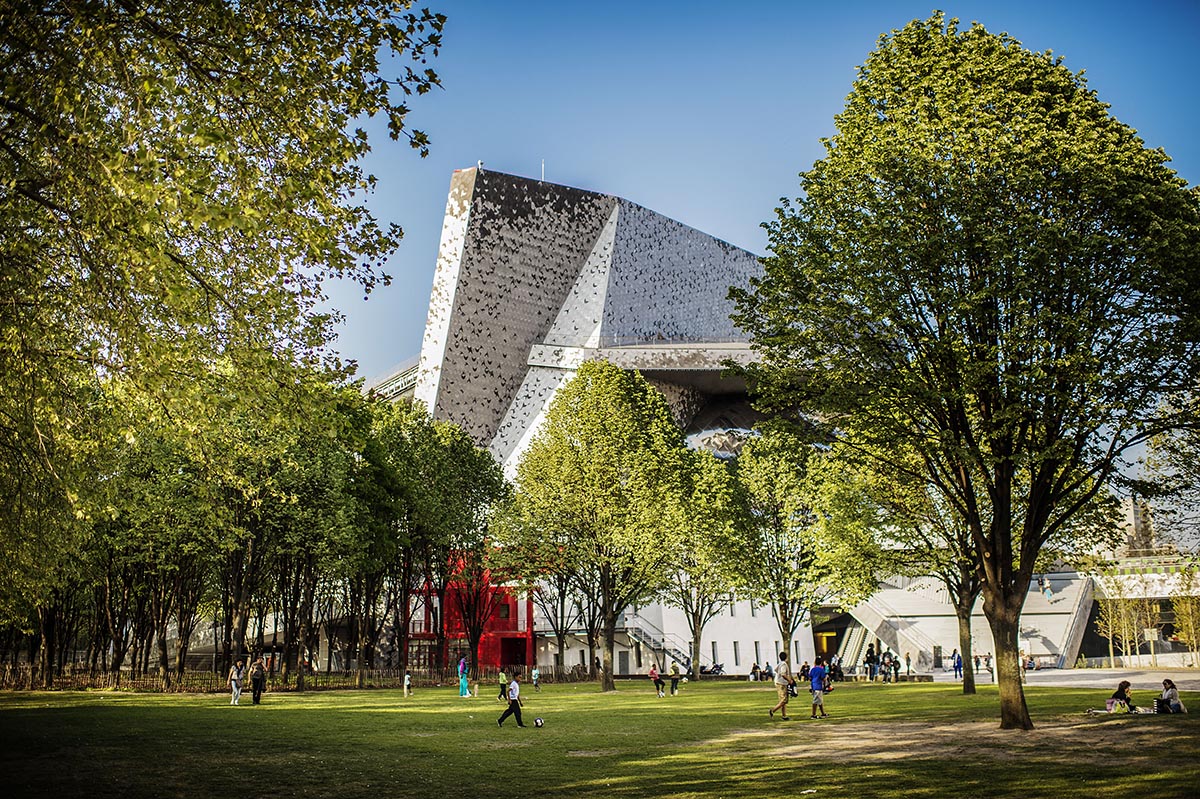
New set of photography reveals captivating and unexplored details of French architect Jean Nouvel's Philharmonie de Paris, which was opened to the public in 2015 - despite Nouvel's opposition to the building's opening in 2015.
The project of the Philharmonie de Paris has began in 2006 and Pritzker Prize-winning architect Jean Nouvel won an international competition in March 2007 to design Paris' new Philharmonie building with his perfectly contextual architecture situated within the Parc de la Villette, but the project saw a long-period of delays to complete the construction until 2015. Even the architect did not participate in the opening of the building at that time because he believed that the building was not fully completed and as its acoustic tests were not done.
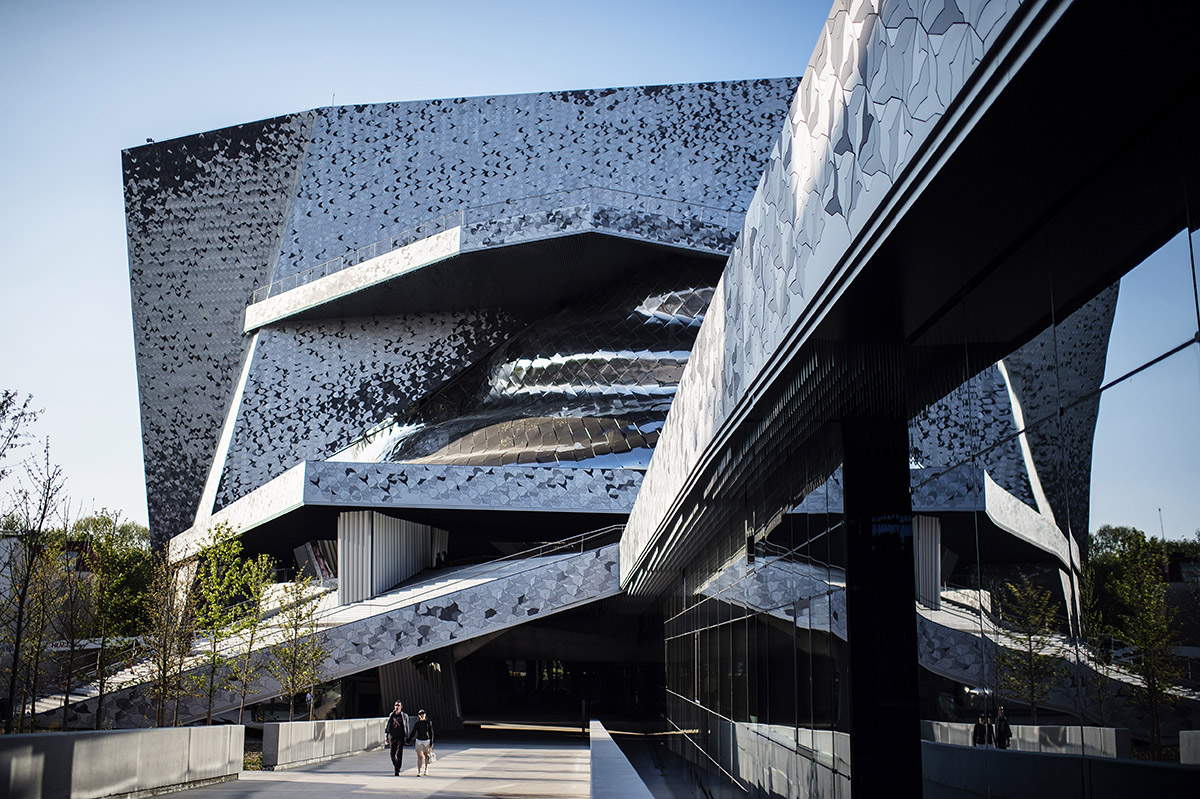
Image © William Beaucardet / Philharmonie de Paris
Jean Nouvel's Philharmonie building has much to say about its harmonious and flowing architecture with its distinctive language and design approach. In this sense, new set of images, which are not covered in detail until now, explores highly-sensory components of this grey-coloured and shining building, set within the Parc de la Villette, welcoming both walkers and families.
Conceived as "a new model concert hall", it has often been asked – in reference to the Philharmonie de Paris – “Do we need yet another concert hall?” - Jean Nouvel and Philharmonie de Paris collectively reply this as: “This is not just one more concert hall.”
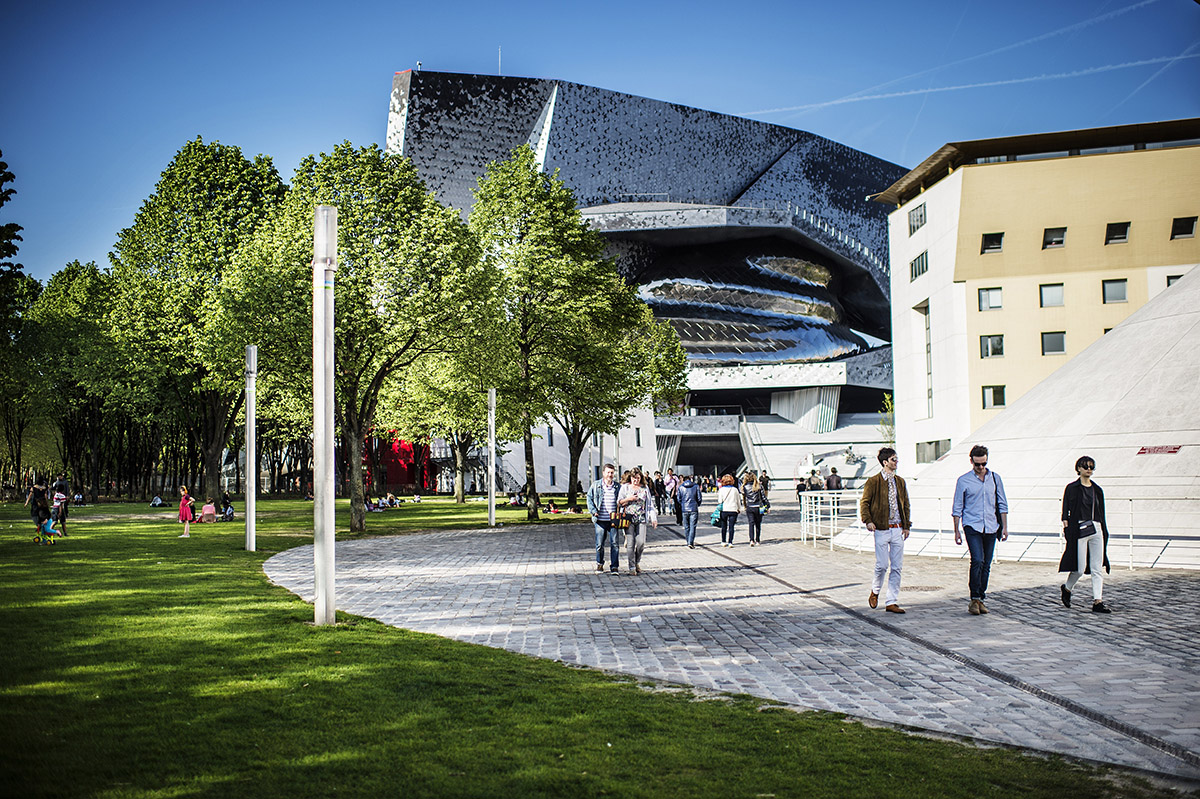
Image © William Beaucardet / Philharmonie de Paris
In it overall composition, the building combines spaces of all kinds. It features an 2,400-seat adjustable auditorium in the core of the building, which is exceptional in its design, ergonomics and acoustic qualities. The building houses rehearsal rooms, 200-seat conference room, 1800-sqaure-metre educational spaces, 800-metre-square temporary exhibition space, restaurant and a cafe at Park level.

Image © William Beaucardet / Philharmonie de Paris
All this forms a unified complex with the Cité de la musique, designed by Christian de Portzamparc which includes 2 auditoriums of 900 and 250 seats, a museum of music and a media library.
The Philharmonie de Paris’s covering is composed of 340,000 birds, divided into seven different shapes and four shades ranging from light grey to black. More than 200,000 birds in aluminium sheeting are installed on the facades’ to symbolize a grand take-off.
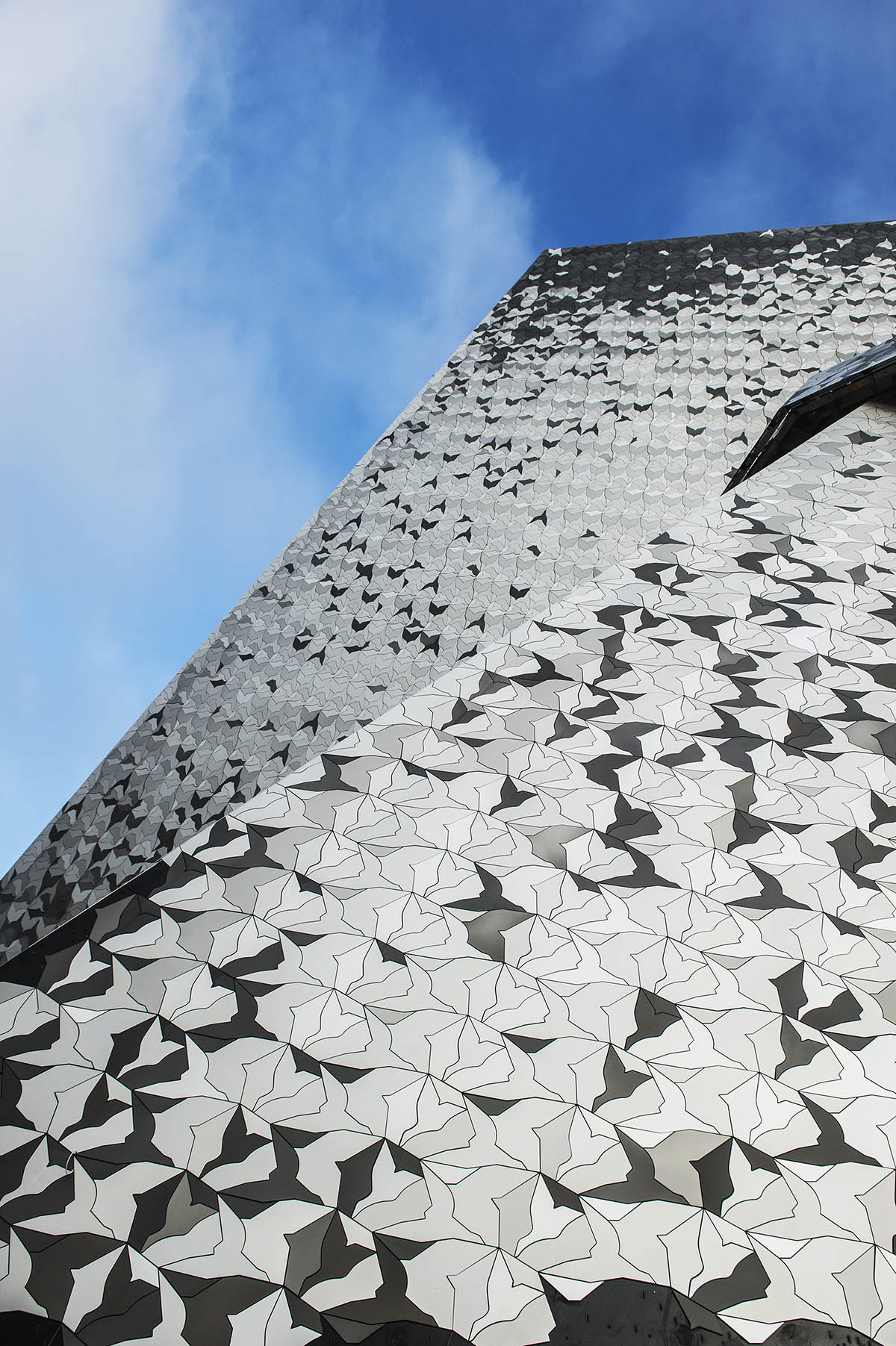
Image © William Beaucardet / Philharmonie de Paris
To adorn the Philharmonie’s esplanade, the ramp and part of the main concert hall’s acoustic roofing, the ground pavement birds are designed in cast aluminium assembled on a pre-cut granite structure. Some of the pavement birds have been moulded in concrete.
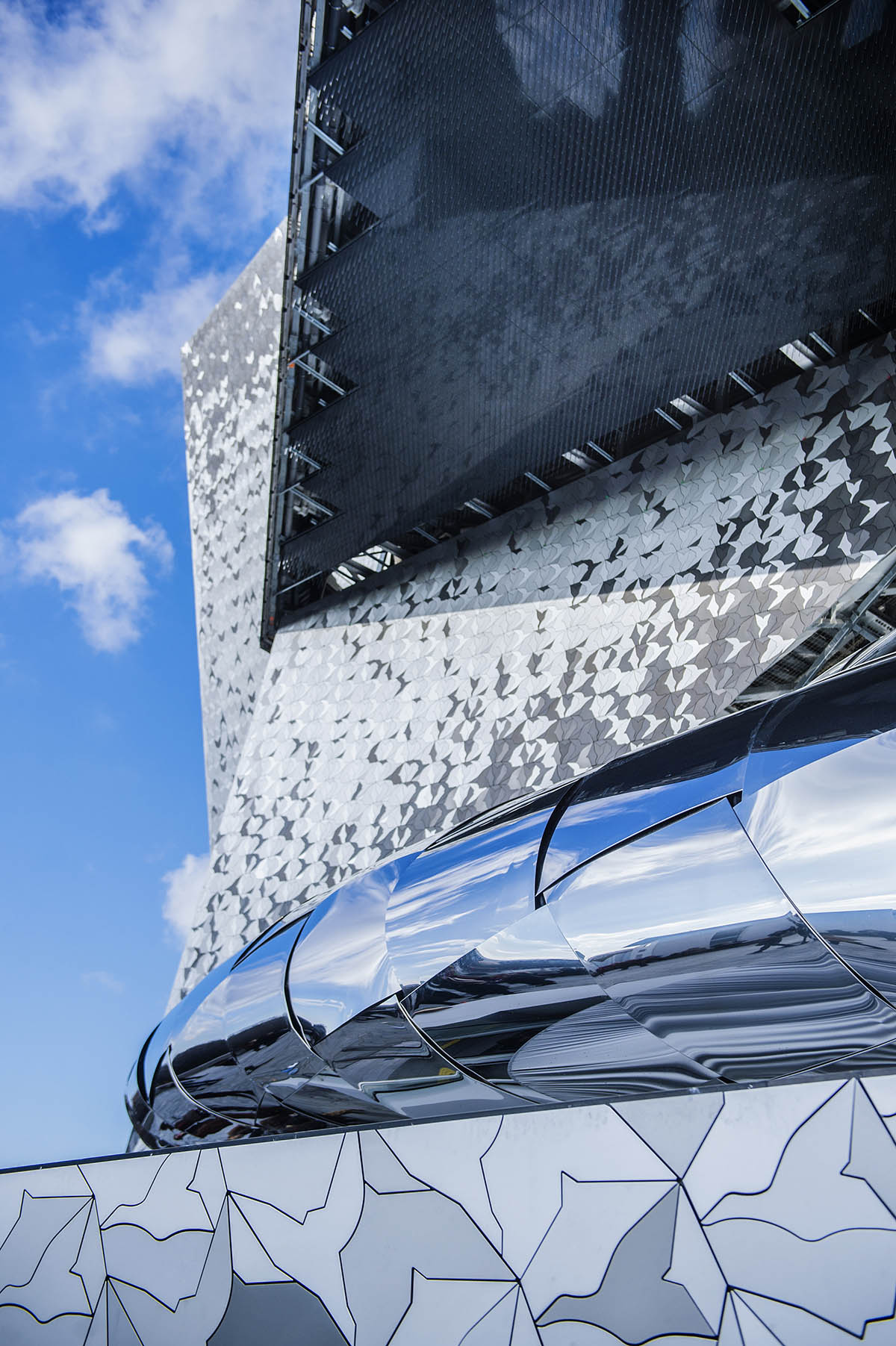
Image © William Beaucardet / Philharmonie de Paris
"In the word Philharmonic, one easily imagines a love of harmony. We play in successive harmonies, in urban harmonies. The Paris Philharmonic exists like a prestigious event which maintains the harmonious relationship with the Parc de la Villette, La Cité de la Musique and the Paris ring road," said Jean Nouvel in a project description.
"Harmony with the light of Paris, the ray of sun in the grey clouds, the rain… An architecture of measured and composed reflections created by a subtle relief of cast aluminium paving that draws Escheresque patterns on the ground," he added.

The Symphonic Hall. Image © AFP - C. Platiau, courtesy of Philharmonie de Paris
The architect worked with two leading acoustic consultants, Sir Harold Marshall of New Zealand and Yasuhisa Toyota of Japan, for the project. The architect Brigitte Métra was involved in the design of the main concert hall. The Philharmonie de Paris’s - also called Philharmonie 1 - is a mineral building with innovative forms, rising up like a hill within the Parc de la Villette.
The shiny aluminium swirls wrapped tightly around the concert hall contrast with the rest of its matt exterior, defined by elegant angles. From the vast rooftop open to the public, 37 metres high, visitors have an expansive view of the city blending into the suburbs.
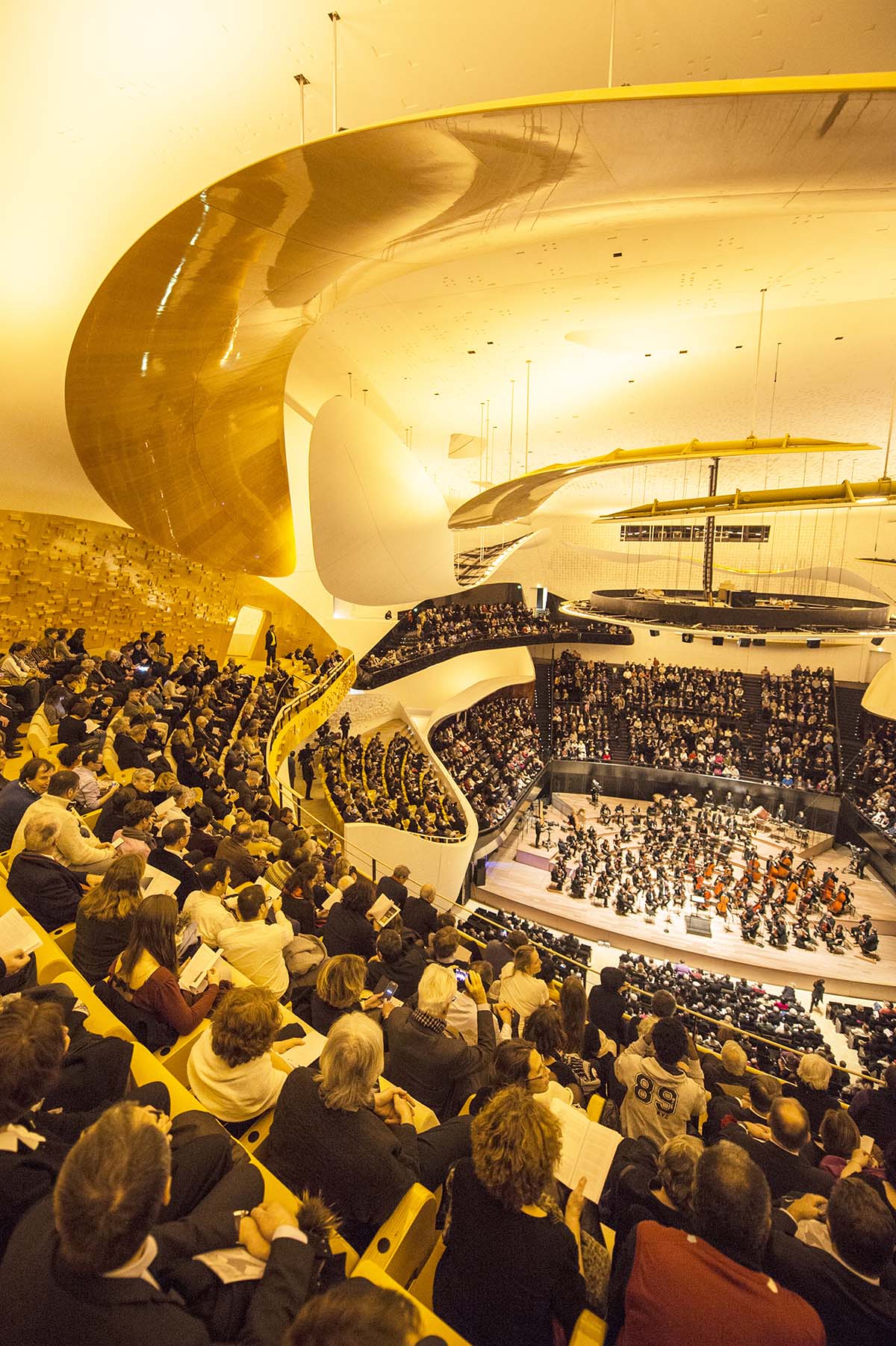
The Symphonic Hall. Image © William Beaucardet / Philharmonie de Paris
Designed as an extension of the Parc de la Villette, walkers, strollers and families are invited to freely wander below, above and through the complex. At the same level as the park is a vast, elegant promenade that surrounds the building. A café welcomes visitors and screens broadcast activities and concerts.
"This is where the main entrance for the Philharmonie is located, providing access to all of the activities proposed every day: educational areas, a conference room, exhibition rooms, a bar, a store and a ticket counter," stated in a project description.
"From the Porte de Pantin, a large triangular ramp gives direct access to the concert hall. A second ramp descends towards the park below. Another access, in the form of a monumental staircase, pointing to the subway and Place de La Fontaine aux Lions, also leads directly to the hall’s entrance."

Image © William Beaucardet / Philharmonie de Paris
"The hall, evoking immaterial sheets of music and light, suspends the listeners in a space on long balconies featuring wide, deep seats for exceptional comfort. Thanks to the suspended design, one has the impression of being surrounded, immersed in music and light. The hall’s shell, a “volumetric cyclorama “, is washed with theatrical lighting according to the repertoire being performed. In fine weather, the windows facing the park and the suburbs can be opened," explained Nouvel.

View from the Music Museum. Image © William Beaucardet / Philharmonie de Paris
"It is about restoring the lustre to the unique experience that each concert represents, an experience not just about the rapture of music, but about visual and sensory pleasure, about sharing that feeling of desire that inhabits the most prestigious Philharmonic halls."
"The Paris Philharmonic will belong of this group, helped by its calm yet powerful ‘monomaterial’ aesthetic of cast aluminium with delicate, pearly nuances, and with the mysterious presence of its hall, softly glowing within the grey and silver folds of the edifice," Nouvel added.

The foyer. Image © William Beaucardet / Philharmonie de Paris
Covering 93,000-square-metre area in total, project started in 2007 and it was opened to the use in 2015. The building also achieves high-level energy efficiency with a gross heated volume of approximately 200,000 m3 and a thermal envelope surface of 28,000-square-metre area.

Image © Borel, courtesy of Philharmonie de Paris
For its heating, the Philharmonie is connected to the urban heating distribution system of the City of Paris. In return, it has installed a water cooling facility in its basement for air conditioning, and the surplus is sent back to the City’s system. Air conditioning is limited to premises where it is required. On the building’s shell, 1,000 m2 of photovoltaic cells have been installed.
Ateliers Jean Nouvel recently completed Louvre Abu Dhabi in the UAE and the studio is currently working on Qatar's new National Museum, comprised of a series of interlocking discs, in Doha, which is officially scheduled to open in December 2018.
Top image © William Beaucardet / Philharmonie de Paris
